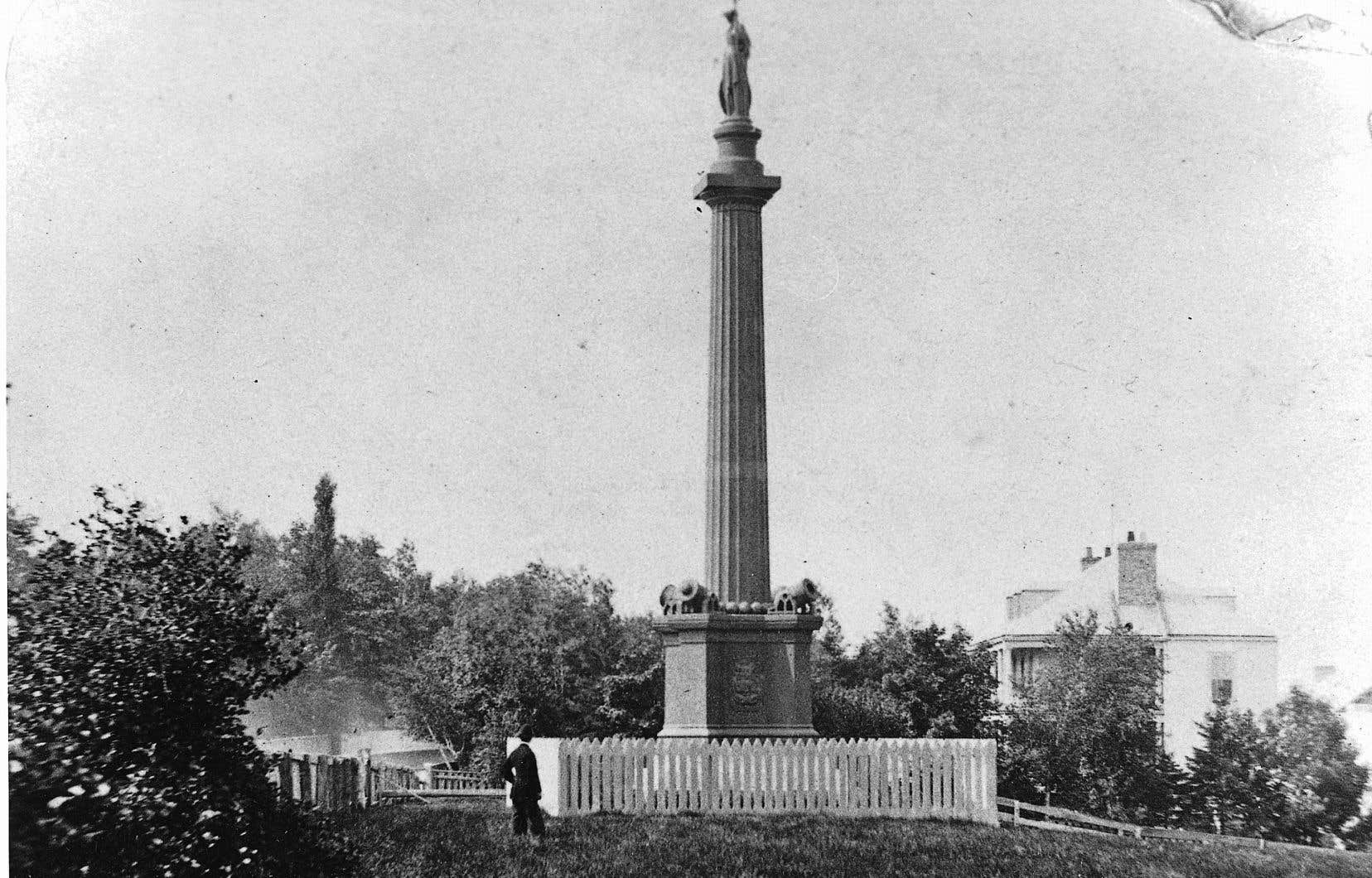The dismantling of the Braves monument, which commemorates the battle of Sainte-Foy, won by the Knight of Lévis in 1760, began this week with a view to its restoration. The base surmounted by a cast iron column and a statue offered by the nephew of Napoleon Ier still contained the box containing the remains of the soldiers who fell during this bloody confrontation.
The restoration of the monument is estimated at half a million dollars by the National Battlefields Commission (NBCC), which is however unable to provide details on the condition of the structure. A request for access to information from Duty on this subject is still being processed, 193 days after its receipt by the federal agency.
The sealed box that was removed from the Braves monument is in a safe place, but it will not be opened “out of respect for the artifacts,” explains Katherine Laflamme of the NBC. The box in principle contains the human remains discovered within the current limits of Parc des Braves, three kilometers west of the ramparts of Quebec, along Chemin Sainte-Foy which gave its name to the famous battle.
The park, located outside the capital’s tourist circuits, notably houses the foundations of the Dumont mill, near which the fiercest fighting took place on April 28, 1760. Despite its resounding victory, the French army of Canada did not was unable to retake the city of Quebec which had fallen into the hands of the British in September 1759, following the Battle of the Plains of Abraham.
Translation
The human remains of the “Braves” of 1760 were spotted in 1852 by the historian François-Xavier Garneau and Doctor Olivier Robitaille during a walk on Chemin Sainte-Foy. “We wanted to see with our own eyes bones which, in small quantities, had been discovered by landslides caused each year by the melting of the snow,” recounts Robitaille in his memoirs. The remains of skeletons exhumed on the French side of the battle line were quickly associated with soldiers from both armies so as not to arouse British sensitivities.
The bones were gathered in a zinc and rosewood case which was buried near the ruins of the Dumont mill on June 5, 1854. The translation of the remains took place in front of enthusiastic spectators who brandished both the French tricolor and the British Union Jack. “The most agile were climbed into the trees,” writes Robitaille. A few branches that were too weak gave way under the pressure of the weight, resulting in numerous falls. »
The former leader of the Patriot movement, Louis-Joseph Papineau, is conspicuous by his absence. The tribune returning from exile did not want to participate in the ceremony which celebrates both the conquered and the conquerors. “Associate in the same party […] those who died to preserve [leur] nationality and those who died to subjugate it seems to me a bizarre misinterpretation and an abject flattery,” laments Papineau.
The cornerstone of the Braves monument was laid in 1855 in the presence of the crew of The Capricious, the first French warship to anchor off Quebec since the British Conquest a hundred years earlier. The future Prime Minister of Quebec, Pierre-Joseph-Olivier Chauveau, gave a patriotic speech emphasizing that “you only die once” and that it is better to die with panache under the grapeshot of a cannon like the Braves of 1760 as “under the wheels of a steam chariot”.
Napoleon
The monument designed by Charles Baillairgé was completed in 1863 with the addition of the statue of Bellone offered by the nephew of Emperor Napoleon 1er and cousin of Napoleon III, who then reigned over France. The gaze of the Roman goddess of war is naturally turned towards the west, where the army of the Knight of Lévis was located.
The column underwent a first restoration in 1892. “Our skillful Quebec decorators, Gauthier & Frères, covered it with a thick layer of a composition which gives it all the appearance of bronze,” reads: we in the newspaper The reader. We took the opportunity to level the land using 800 “trips” of gravel and earth.
The operation led to the rediscovery of the remains of the Dumont mill, from which new bones emerged. “There is a whole mine there for our archaeologists to exploit,” notes The reader. However, it will be necessary to wait until 2011 for the circular foundation of the mill to be uncovered during an excavation.
The monument inaugurated 160 years ago is in its second dismantling, after that of October 1970 caused by the widening of Chemin Sainte-Foy. A mechanical ram then struck the ossuary which had obviously been forgotten in the structure. The human remains had been returned to the base of the reconstructed monument a few meters from its original location. They must also return there when the latter is reinstalled on the site at the end of 2024 or the beginning of 2025.
